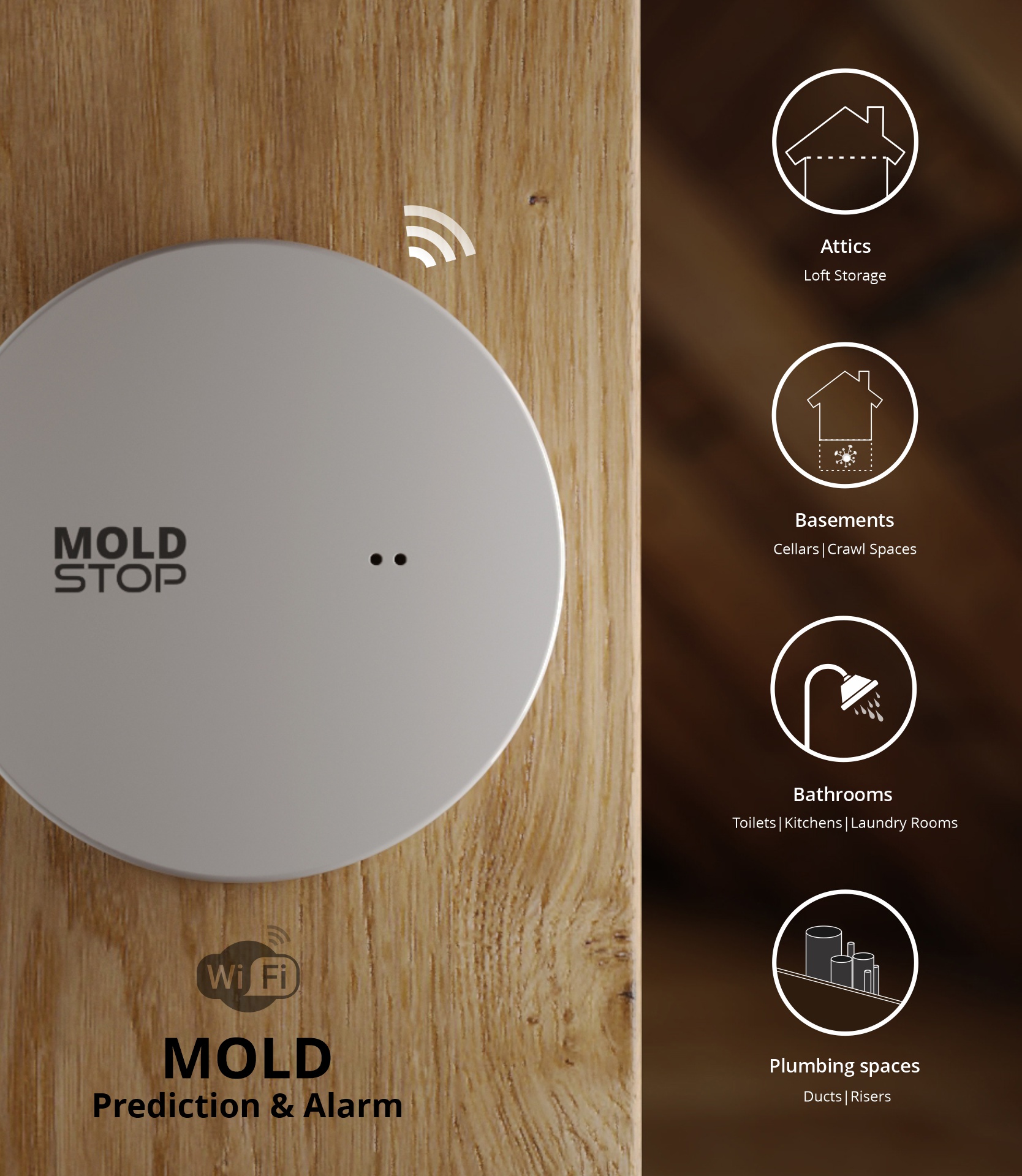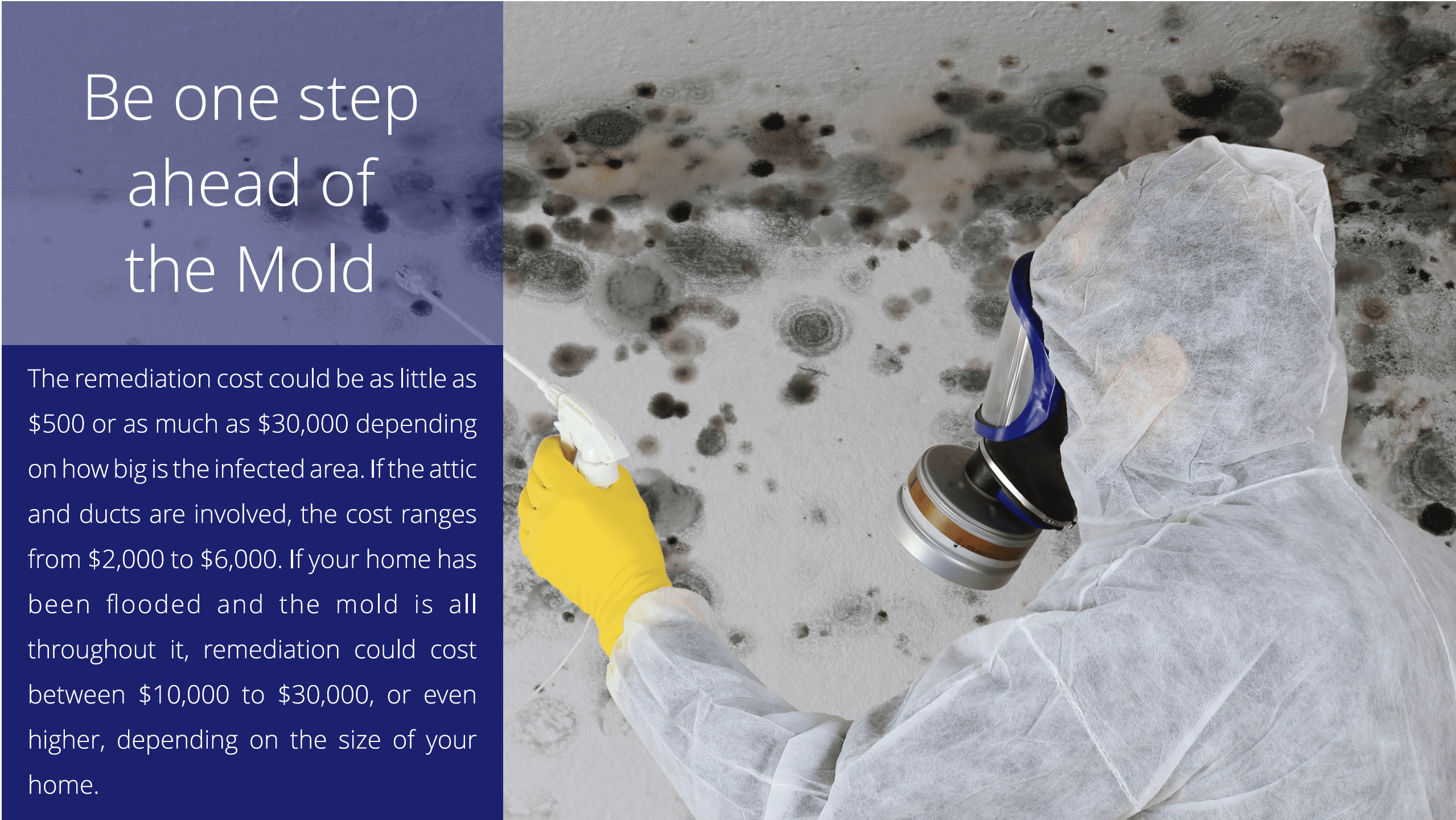
How It Works?
For many years, biologists have studied the growth patterns of mold on different buildings to formulate the life cycle of mold. As a result, mold growth potential has been formulated into a differential equation.
The equation can predict mold growth potential by taking time, ambient temperature, relative humidity, surface material, and texture into account. Depending on these parameters, the pace of mold growth can accelerate, slow down or even be reversed.
By feeding the mathematical model with enough environmental samples, the formation and growth of mold can be simulated and predicted.
MOLD STOP as a data logger needs to be positioned in a vulnerable spot(s) throughout the building and will constantly record humidity and temperature, sending this data to the web-based application. The application monitors changes in parameters and spots trends like EMC (equilibrium moisture content) and “mold growth index” based on mathematical simulation of the condition. It does not prevent mold growth on its own. It also does not measure mold spurs or any biological contamination. The risk of mold contamination can be significantly mitigated by the proper and on-time reaction of the user to the system’s alarm, but the device cannot guarantee mold growth prevention. MOLD STOP cannot detect pre-contamination with mold. In other words, MOLD STOP is not a mold detector. To detect if there is any current contamination with mold, you need to use a mold detection kit.
All you need to do is connect the MOLD STOP to your preferred Wi-Fi network and simply place it into the vulnerable spot where mold is to be expected.
You will receive a text message (SMS) and email notification as soon as any potential mold growth condition is detected. If you need to dig deeper, you always have access to detailed readouts, graphs and monitored parameters using the web-based application.
How It Works?
For many years, biologists have studied the growth patterns of mold on different buildings to formulate the life cycle of mold. As a result, mold growth potential has been formulated into a differential equation.
The equation can predict mold growth potential by taking time, ambient temperature, relative humidity, surface material, and texture into account. Depending on these parameters, the pace of mold growth can accelerate, slow down or even be reversed.
By feeding the mathematical model with enough environmental samples, the formation and growth of mold can be simulated and predicted.
MOLD STOP as a data logger needs to be positioned in a vulnerable spot(s) throughout the building and will constantly record humidity and temperature, sending this data to the web-based application. The application monitors changes in parameters and spots trends like EMC (equilibrium moisture content) and “mold growth index” based on mathematical simulation of the condition. It does not prevent mold growth on its own. It also does not measure mold spurs or any biological contamination. The risk of mold contamination can be significantly mitigated by the proper and on-time reaction of the user to the system’s alarm, but the device cannot guarantee mold growth prevention. MOLD STOP cannot detect pre-contamination with mold. In other words, MOLD STOP is not a mold detector. To detect if there is any current contamination with mold, you need to use a mold detection kit.
All you need to do is connect the MOLD STOP to your preferred Wi-Fi network and simply place it into the vulnerable spot where mold is to be expected.
You will receive a text message (SMS) and email notification as soon as any potential mold growth condition is detected. If you need to dig deeper, you always have access to detailed readouts, graphs and monitored parameters using the web-based application.

Stay one step ahead of the Mold
The remediation cost could be as little as $500 or as much as $30,000 depending on how big is the infected area. If the attic and ducts are involved, the cost ranges from $2,000 to $6,000. If your home has been flooded and the mold is all throughout it, remediation could cost between $10,000 to $30,000, or even higher, depending on the size of your home.